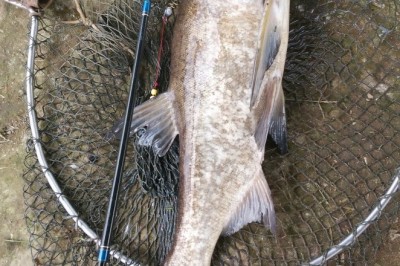Stainless Steel Chimney Liner
Stainless Steel Chimney Liner
You still arent over the shock of the esitimate your chimney sweep left you for what he says is needed to use your chimney safely. He told you that you need to install a stainless steel chimney liner in your existing masonry chimney. You have no idea what a stainless steel chimney liner is. Most of all you have no idea why the sweep wants so much money to do the job.
Chimney Liner Metal Alloys
You found your way to this site, so you must be interested in doing the job yourself. So lets discuss some options you have and the types of stainless steel chimney liner that are out there.
First thing you should be aware of is that most manufacturers wont honor a warranty for a stainless steell chimney pipe installation if a non professional does the work. However, Royal Chimney Supply, the manufacturer of Flex King chimney liners will honor the warranty if you do the job yourself.
You can choose to use either a rigid stainless steel chimney liner or flexible pipe. Flexible pipe should be used if your chimney is less than perfectly straight with no joggs or offsets. If you have a nice straight chimney you most definately should use rigid chimney pipe.
Compare Chimney Liner Brands
Rigid stainless steel chimney liner is the best product available to line a chimney. Its thick, and cleans the best. Its the most durable and will never rip if you clean it agressively. Light flexible chimney liners need to be cleaned with a type of plastic chimney brush because they are so thin.
There are different types of thicker more durable flexible liners available. Flex King Pro is a double wall, smooth interior liner. It cleans much better than standard Flex King liners and is more durable.
Heavy Flexible liners are very thick and durable. The only problem with them is that they are very heavy. A homeowner may have some trouble when installing a heavy flex stainless steel chimney liner.
More info about Stainless Steel Chimney Liner
If you are going to purchase a light flex stainless steel chimney liner you should buy one that is made from 316TI stainless steel. A lot of lesser quality liners are made from 316L. The TI stands for titanium. The addition of titanium gives the liner the ability to withstand less than perfect chimney conditions
Should I insulate my liner?
You should definately insulate your liner if you have the room. Why? With a wood or coal stove you will lose a lot of heat up the chimney. When hot flue temperatures meet with cold temperatures it will create condensation. When flue gases meet with condensation the result is creosote. By reducing the formation of creosote you will lengthen the life of your chimney liner. Keeping your chimney liner warm will also keep the draft consistent and will improve the performance of your stove.
What is a Rigid Chimney Liner?
Most rigid chimney liner sections are made of nonmagnetic, series 304 or series 316 stainless steel. Unlike the flexible stainless steel liner, rigid pipe comes in sections and is usually round in shape and one to four feet long and five to ten inches or more in diameter. The most common wall thickness is 24-guage (0.024 in.) or 22-guage (0.029 in.) stainless steel.
The seam running down the length of each liner sections is factory sealed. Individual liner sections are joined together with the crimped, male end facing down. Stainless steel pop rivets and stainless steel screws secure the joints.
Pop rivets are recommended by most manufacturers since screws may work themselves loose from the expansion and contraction of the liner. Usually rigid relining jobs are supported at the bottom of the chimney or at the thimble area.
Stainless steel tee sections are used at the thimble and clean out areas. Rigid stainless steel liners can expand several inches during heating. To accommodate for this expansion the liner moves up and down in a sleeve at the top of the chimney.
A storm collar over the sleeve prevents moisture from entering the chimney along the outside of the liner. The area around the sleeve at the top of the chimney is sealed with either a stainless steel plate or a concrete pad.
The opposite of rigid chimney liner, flexible chimney liner
The use of rain caps are recommended for use on chimneys with stainless steel liners. It can be very important to have the most efficient venting possible.
A smooth walled rigid liner offers the most efficient venting due to the decreased turbulence. You can shape it to take full advantage of every cubic inch and offer maximum draft. It can be shaped into rectangular, square or oval.
Stainless steel resists corrosion, maintains its strength at high temperatures and is easily maintained. For these reasons, it is used widely in items such as automotives, home and food processing products, as well as medical and health equipment. The most common types are: 304; 316; 316Ti; 316L; 29-4C.
316TI Stainless Steel
316TI is a stainless steel alloy with a small amount of titanium added. Its make-up allows it to resist acids and the stresses of hot and cold cycles. It can be used with solid fuels (wood, coal and pellet), gas and oil. It can withstand temperatures up to 2100 degrees.
316L Stainless Steel
316L chimney liner metal is commonly found in some thicker flexible chimney liners as well as in rigid chimney liners. The titanium is left out because of the added thickness of liners made from 316L stainless steel. 316L stainless steel is acceptable for use with coal, wood, gas or oil systems.
304L Stainless Steel
304L is best for chimneys venting a wood burning appliance. This alloy is commonly found in rigid chimney liner.
The most commonly specified austenitic (chromium-nickel-stainless class), it accounts for more than half of the stainless steel produced in the world. This grade withstands ordinary corrosion in architecture, is durable in typical food processing environments and resists most chemicals.
Al 29-4C Stainless Steel
This chimney liner metal alloy is used most often when relining a masonry chimney or clay lined chimney that will vent a modern high efficiency gas or oil furnace.
It is an alloy of stainless steel that is highly resistant to corrosion. It is used for relining flues where flue gases may contain highly corrosive elements. Being that most of the heat generated by such a high efficiency appliance goes into the home, the flue gas temperatures tend to be relatively low.
Low flue gas temperature keeps moisture in the flue gases from evaporating and being eliminated up the flue. The combination of moisture in the flue gas along with other chemicals that may be inducted into the flue from the surrounding environment, such as those from chemical cleaners and laundry supplies, can contribute to a very corrosive flue gas composition.
AL29-4C is made to resist such corrosive environments over a long period of time.
For more information call :Chimney Liner Depot (800) 943-1515
or go to http://www.chimneylinerdepot.com/
Glen Kellogg is a certified chimney professional that has single hanidly revolutionize the do it yourself chimney repair industry.
























